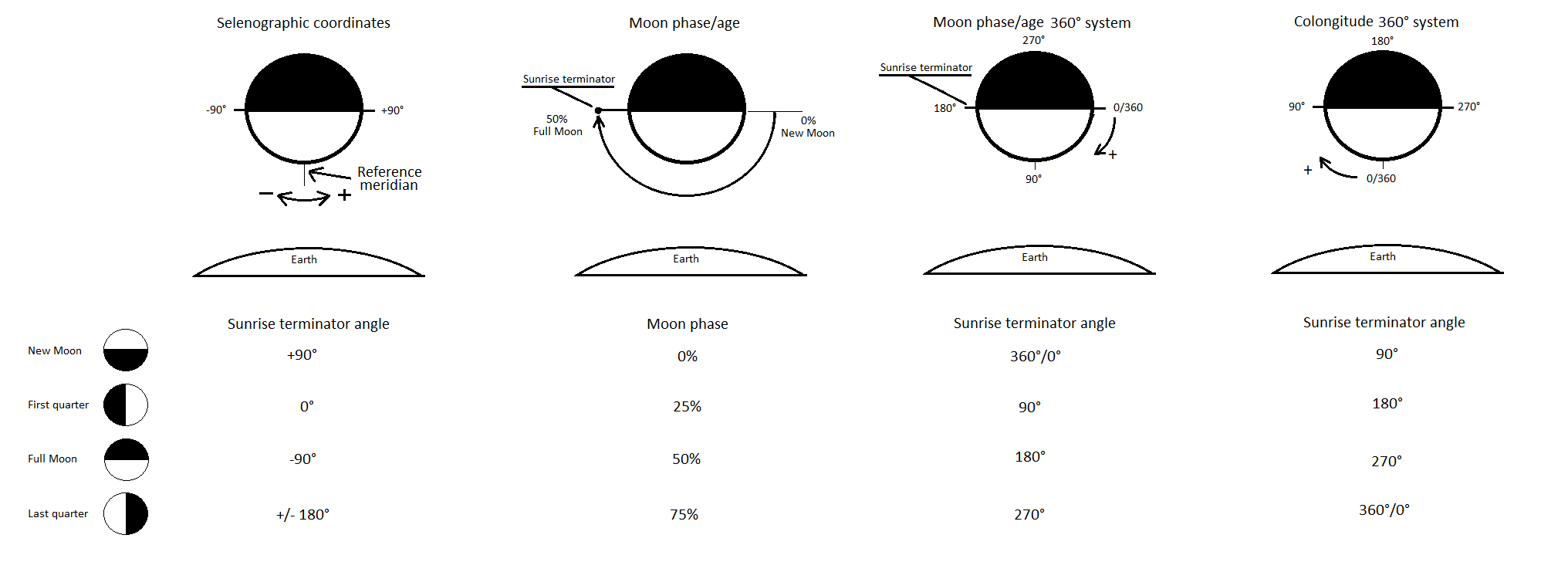|
Moon data calculated for time: Earth Local: Earth UTC: - |
|
|
| Illuminated percentage: - Phase percentage: - Moon age: - Phase name: - Sunrise selenographic longitude(1): - Sunset selenographic longitude: - Colongitude: -(*) Phase from colongitude: - |
